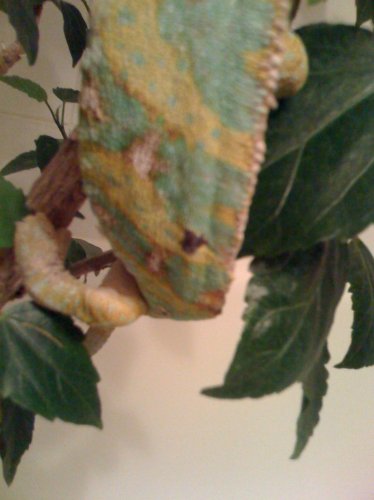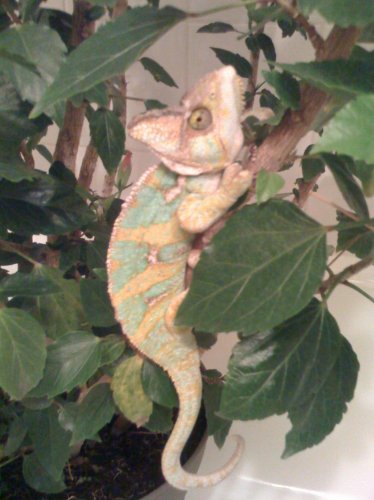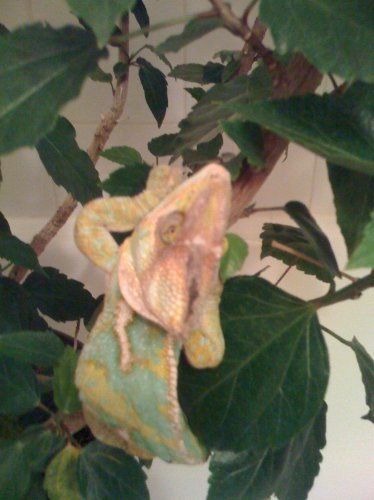panthercrazy
New Member
I received call from local shop to come see if I could help this guy out. He was dropped off by current owner for the store to sell him, as he is no longer wanted.
I have given him a shower, set him up appropriately , and have him outside for the benefits of the natural sun, hoping this will help better. ( He previously was housed in a 22gallon mesh tank sideways, so no height, 1 bio vine, no greenery at all, and a water bowl. Lights = Black bulb & 24" zilla T5 - Old style)
His arms/hands look beyond horrible, eyes sunken, bites & wounds along back & side. He has hardly any grip, I had to support him on the tree he's own during the shower.
I really don't know that this guy can be saved or if it's more humane to euthanize Unfortunately, the herp vet here is away right now. I already am certain that this is MBD in a very bad way. He is not eating whatsoever I've been told and without being able to obtain injections for him, how else can I safely get calcium into him?
Unfortunately, the herp vet here is away right now. I already am certain that this is MBD in a very bad way. He is not eating whatsoever I've been told and without being able to obtain injections for him, how else can I safely get calcium into him?
Why???? To take on such a creature, or any for that matter, and allow them to get this bad?? Research! Even if he was an impulse buy, why wouldn't someone consider resarching to find out what the "pet's" requirements and needs are? I am just sick to my stomach that someone could do this to any animal.
EDIT: Forgot to mention he has mites too!!
I have given him a shower, set him up appropriately , and have him outside for the benefits of the natural sun, hoping this will help better. ( He previously was housed in a 22gallon mesh tank sideways, so no height, 1 bio vine, no greenery at all, and a water bowl. Lights = Black bulb & 24" zilla T5 - Old style)
His arms/hands look beyond horrible, eyes sunken, bites & wounds along back & side. He has hardly any grip, I had to support him on the tree he's own during the shower.
I really don't know that this guy can be saved or if it's more humane to euthanize
Why???? To take on such a creature, or any for that matter, and allow them to get this bad?? Research! Even if he was an impulse buy, why wouldn't someone consider resarching to find out what the "pet's" requirements and needs are? I am just sick to my stomach that someone could do this to any animal.
EDIT: Forgot to mention he has mites too!!









